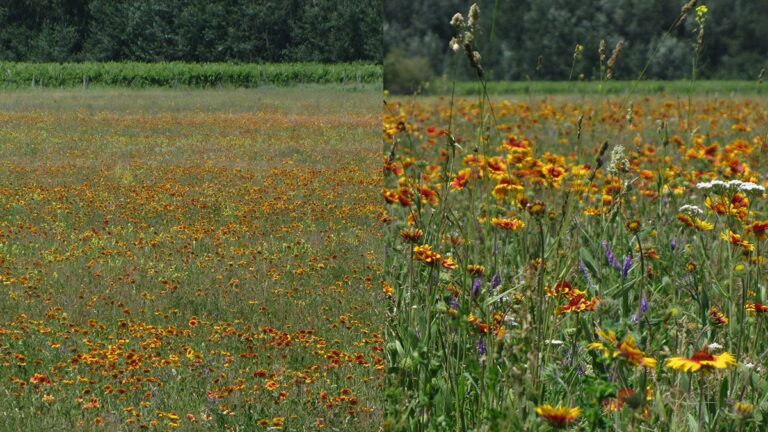Ornamental plants are introduced to new habitats when they are planted in gardens, where the maintaince creates the suitable conditions for them. Later, in natural habitats, they can easily occupy open niches by escaping from gardens and become invasive. This is the path taken by the great blanketflower, whose ecological effects have been studied by researchers at the Centre for Ecological Research.
The great blanketflower and its relatives are ornamental species planted all over the world. Its escape from gardens and establishment in new habitats have been reported in several countries, but its invasive behaviour has been unknown. However, this species has found suitable habitat conditions in Hungary and has become invasive in some places. Therefore, the researchers aimed to map the distribution of great blanketflower in Hungary, evaluate its impact on the local plant community and determine its invasive potential.
The distribution data show that great blanketflower occurs mainly as casual escapes, but a significant number of naturalised and invasive populations have been found within the country. The species spreads successfully mainly near gardens and disturbed or sandy habitats, but also occurs in semi-natural and natural grasslands. Its establishment has reduced the species richness of the local plant community. Its invasion is facilitated by its well germination capacity, long flowering period and spread by the fur of grazing animals. The great blanketflower does not yet appear to be a strong ecosystem transformer species, but more attention needs to be paid to it, as it could spread strongly and become invasive in the future due to drier weather caused by climate change.
The results of the research suggest that planting blanketflower species in gardens is not recommended, as they can easily colonise natural plant communities once out of the garden, and their sale in seed mixtures is not recommended. There is a need for a survey of great blanketflower and similar alien ornamental plant populations, their long-term monitoring and a more detailed evaluation of their invasion properties.
Publication:
Süle, G., Miholcsa, Z., Molnár, C., Kovács-Hostyánszki, A., Fenesi, A., Bauer, N., Szigeti, V. Escape from the garden: spreading, effects and traits. NEOBIOTA, 83 pp. 43-69. , 27 p. (2023)
Related links:
This research was supported by the National Talent Programme of Hungary and the Prime Minister's Office (NTP-NFTÖ-21-B-0288), and by the National Laboratory for Health Security (RRF-2.3.1-21-2022-00006), Centre for Ecological Research, Budapest, Hungary.



